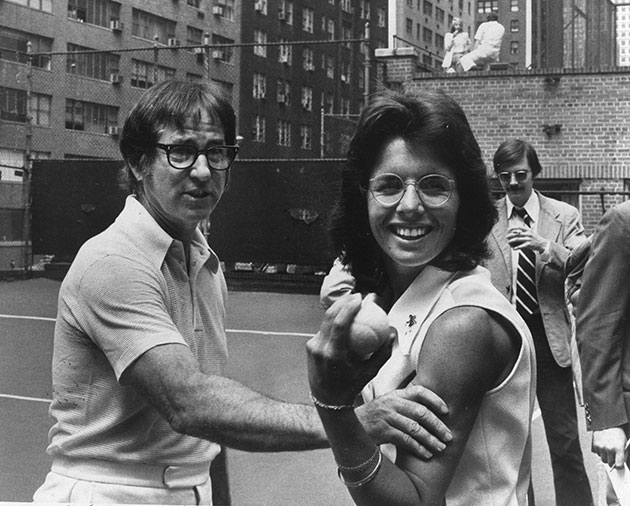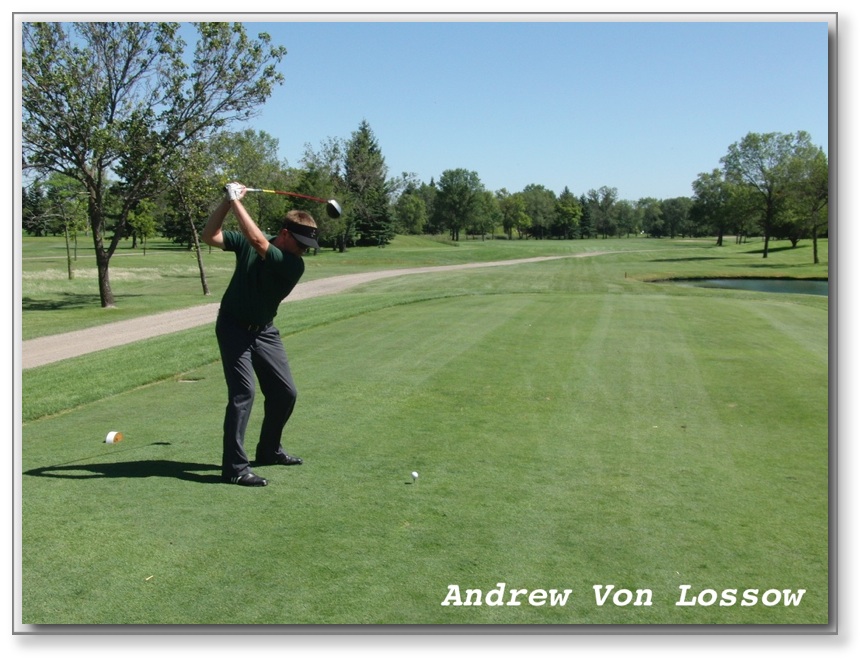Everyone who has ever played golf has experienced his share of Eureka moments. You know…when some little, seemingly insignificant move or feeling leads to a streak of ball striking that would make Hogan envious. The question is what makes the feeling (and the glorious results) go away?
Was it really just a feeling; some phantom perception the brain tricks the player into believing is real?
Or, was the feeling genuine but merely based upon a movement, or position, that could not be sustained over time?
Or, speaking of time, was the good play the result of an increased yet transitory sensitivity to rhythm? If it’s this, it’s all the more surprising that it goes away. Once we learn the meter and rhythm of a dance step, we’ve usually got it for good.
Beyond these questions, is whether the same discovery can come back and work more than once?
Fortunately, there are people who know a lot more about the golf swing than I do and are far better able to wrestle with these questions. Two of them are PGA professionals I’ve had the pleasure of working with. Tony Manzoni is the author of The Lost Fundamental (www.thelostfundamental.com) and Kathy Cho (www.kathychogolf.com) is working on a book called, From the Hole to the Tee, an instructional book especially for children and the adults who teach them.
Tony was a tour player and is also one of the founders of Callaway Golf. For the last 40 years, he has been one of the most sought after teaching professionals in the California Desert. He has also coached the College of the Desert golf team for the last 25 years, leading them to dozens of league championships.

Kathy is both a Class A PGA and LPGA professional. She has been the head coach of Pasadena’s First Tee program at the city’s legendary Brookside Golf course for the last five years. She has been teaching the game she loves since 2003.
For Kathy, “The Eureka moment is a beautiful thing. It’s just the game of golf. Part of golf’s challenge is that it can be so frustrating.” The question for Kathy is how the player deals with frustration when it comes. She says, “Relax, and use quality practice to rebuild your confidence. We’re all looking to stay in the zone when we get there, but tension and frustration are the enemy,” Kathy warns. “The player who has lost his way needs to be positive, patient and be ready to play well again.
One point Kathy made I should have anticipated but didn’t, was perhaps the most obvious: Take a lesson. Your local PGA pro may be able to recognize what has gone wrong with your swing and will save the player a great deal of frustration, let alone time.

Kathy also thinks it’s a good idea to have a check list of sorts that details what was going on when the player was in the zone as well as when he lost his swing. Kathy says, “Ask yourself if you’re feeling OK? Have you been staying healthy? Are you practicing good course management or have you been playing golf the hard way?”
Kathy wants her students to think about the basics. “The golf swing has too many parts for us to think about everything that’s happening. Also, it’s easy to try too hard and to over swing when our game takes a bad turn.” Instead, Kathy advises players to, “Think about the basics like good balance, keeping a steady pace; that includes keeping control of your breathing.”
Few in golf have accomplished what Tony Manzoni has accomplished during his storied career. He has enjoyed success as a player and an entrepreneur. Tony’s also given back to golf with his long and impressive tenure as the Director of College of the Desert’s Golf Management Program and as a teaching professional. Golf is Tony’s game, but even someone of his stature can occasionally be made humble by this game.
“Everyone who has played golf for a good number of years has shared this common experience, or Eureka moment; when a swing idea, or maybe a thought from the past, surfaces and all of a sudden we are hitting the ball like we always dreamed we could. Sometimes it happens on the driving range or when you are out playing, and generally none of your buddies are around to witness this state of Hoganism. You can’t wait to utter the forbidden phrase, I’ve got it, to anyone in sight.”
“I’ve had those moments when the game seemed so easy I’d start fantasizing about winning the next tournament. I could hardly sleep at night anxiously waiting for daybreak to hit the links and show the world the new me. Then, like a puff of smoke the spell is broken. No matter how hard a player tries to re-create yesterday’s results nothing works. Then you’re left to wonder: how can the golf god’s be so cruel?”
“I have seen grown men weep over this frustrating dilemma; it`s like God has let them see golf heaven for just a moment and then shut the door. I’ve had students come to me and say, Coach, I hit it so good yesterday but today I stunk up the place, what can I do?”
“My answer may be difficult to swallow. Golf is a game of feel, not a game of purposely doing something. When you feel like it’s going to be good prior to doing it, the magic happens. When you are trying to make it happen, good luck. It is far easier to blueprint the feel of a mistake than to anticipate perfection. Pressure is the manifestation of doubt. If we can, we feel the positive outcome beforehand; pressure or doubt does not exist. When the Eureka moment happens enjoy and remember the feeling. It is internal and not meant to be talked about or displayed.”
I have to admit these two pros may see things a bit more clearly than I can. Me? I’ve had my share of Eureka moments, but I now work hard to ignore them. I try to work ceaselessly and ploddingly on what I believe to be fundamental, but that’s not always easy. Still, this practice keeps me from getting too worked up over something that probably won’t stick around.
It is difficult to resist telling our golf buddies about our latest discovery that has us reconsidering our career choice and dreaming of a trip to Q School. As I said, that’s a lesson that took me many years to learn. It will always be hard for our drive to excel to coexist with the wisdom of being reasonable when it comes to expectations about how well we play. It’s often more difficult to be fair to ourselves than it is to be fair to others.
With any luck, my next Eureka moment is coming along soon; but I won’t be telling anyone about it when it arrives!









